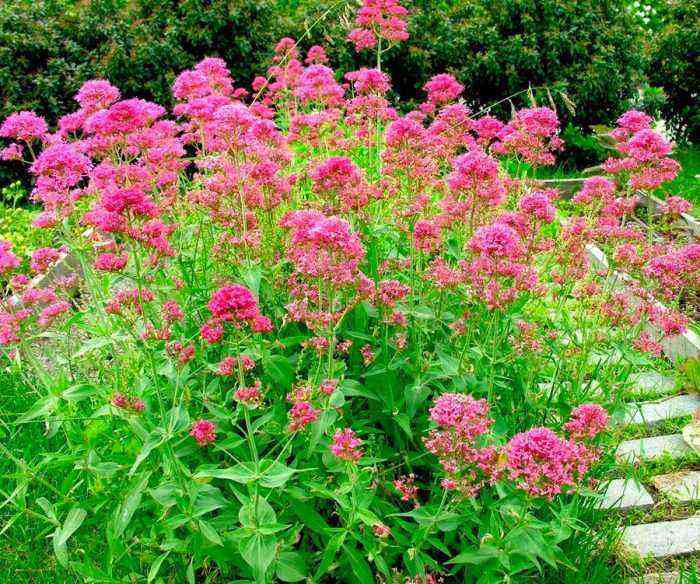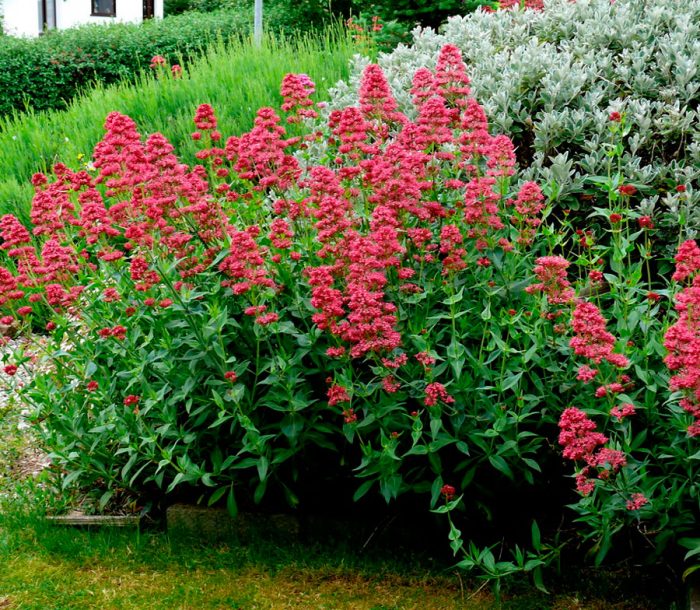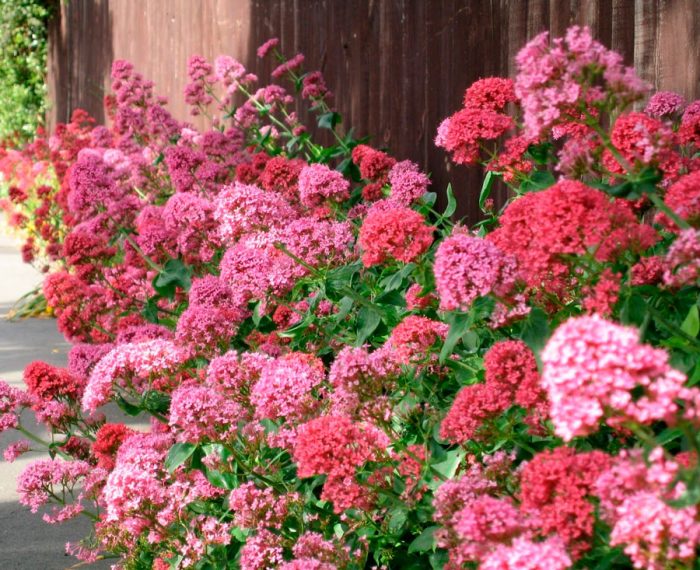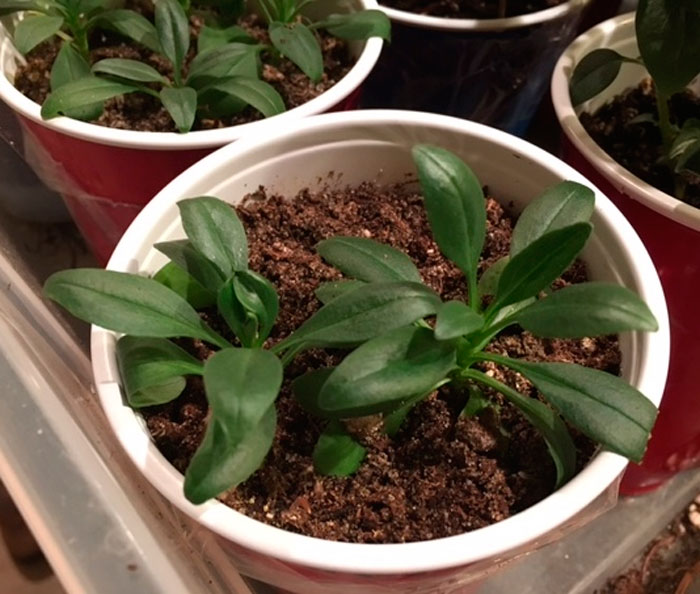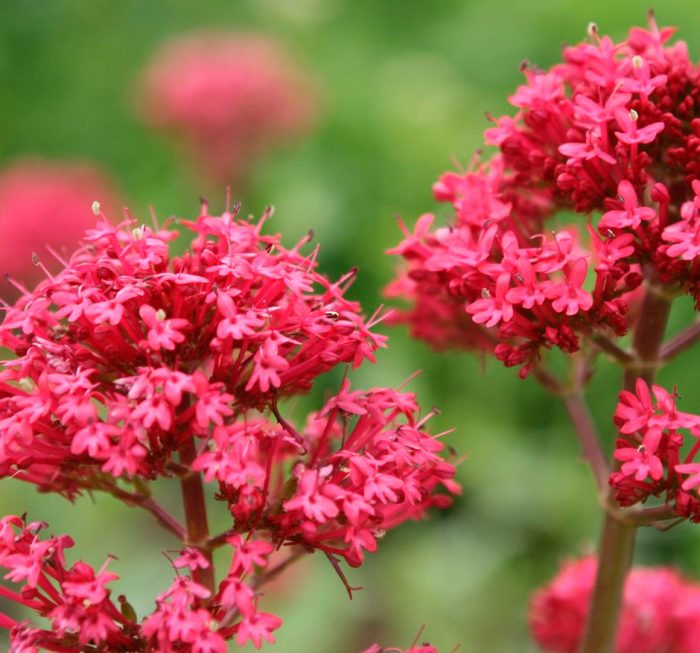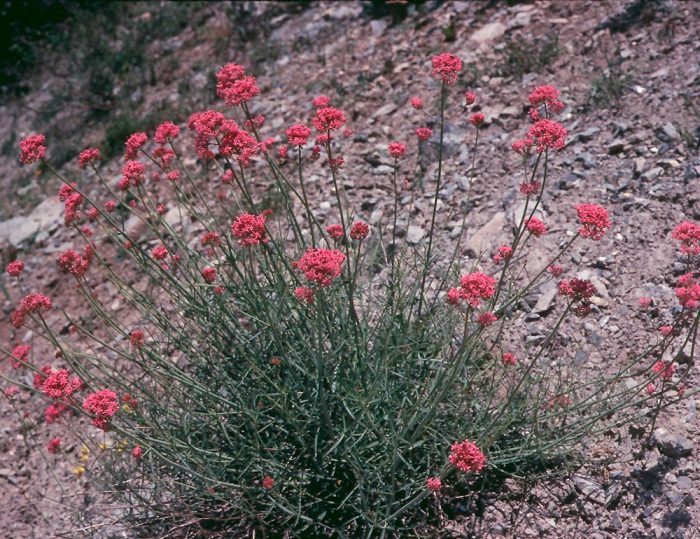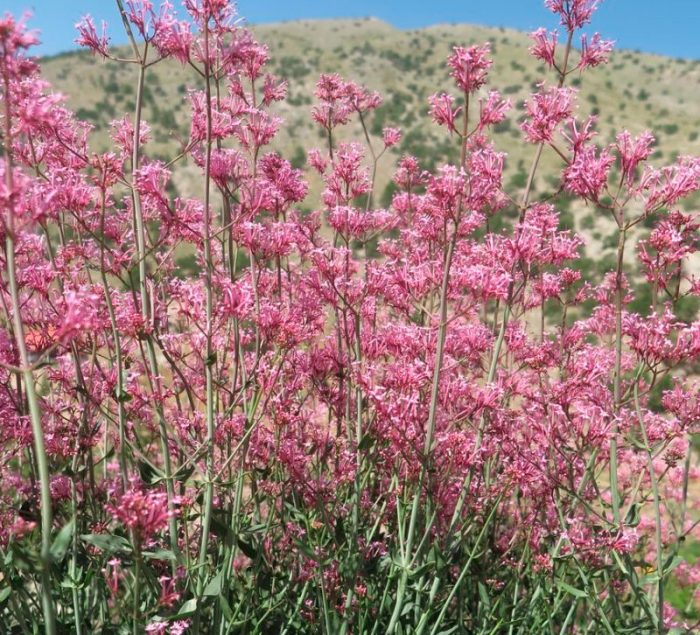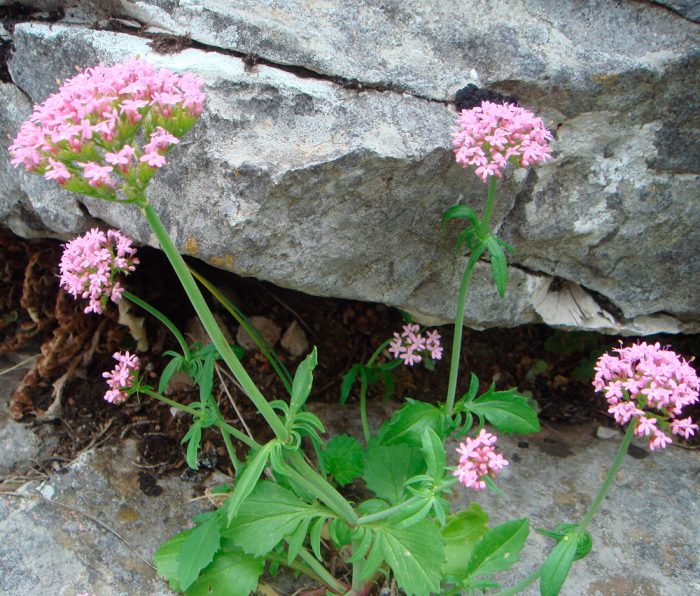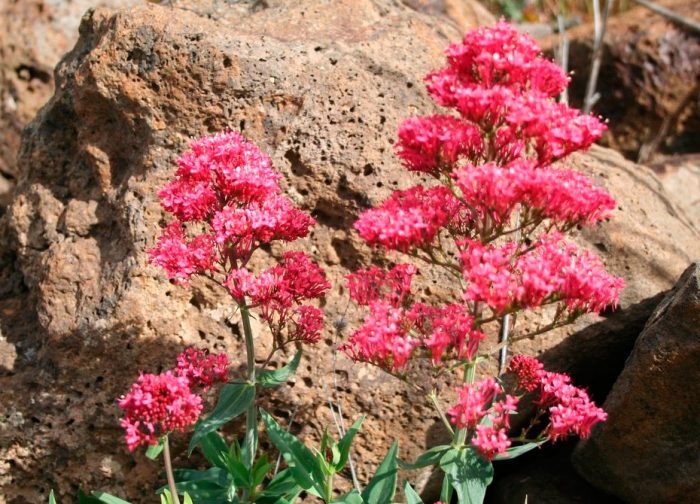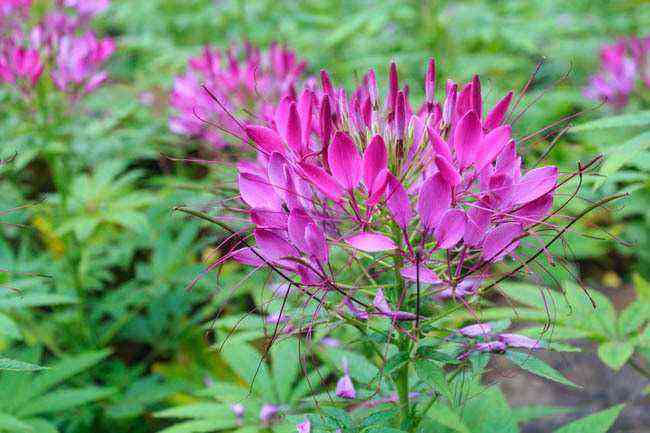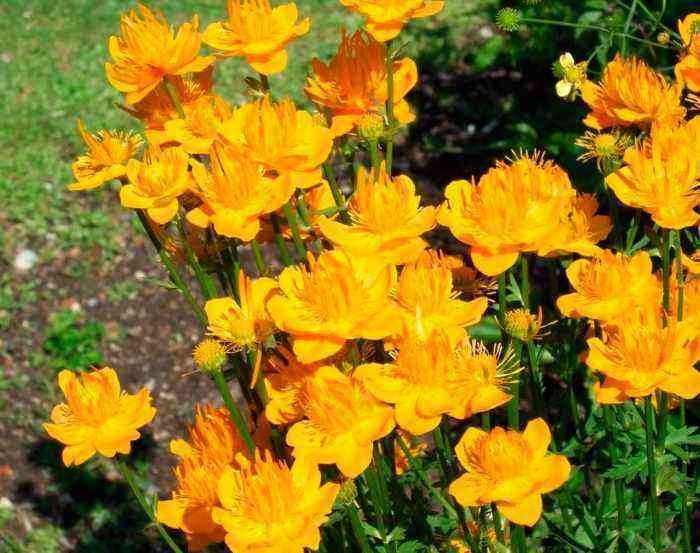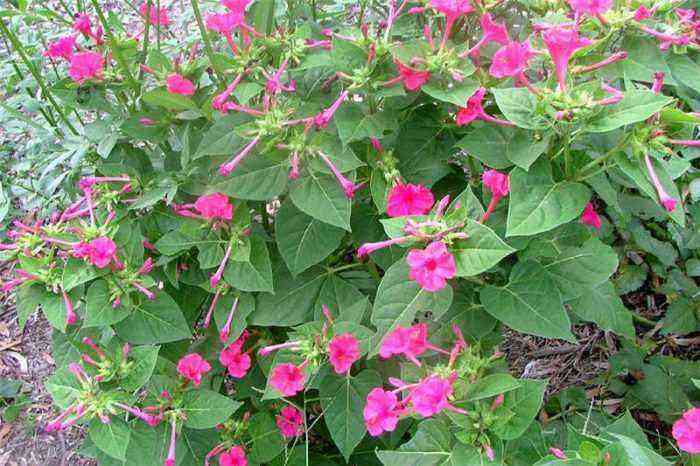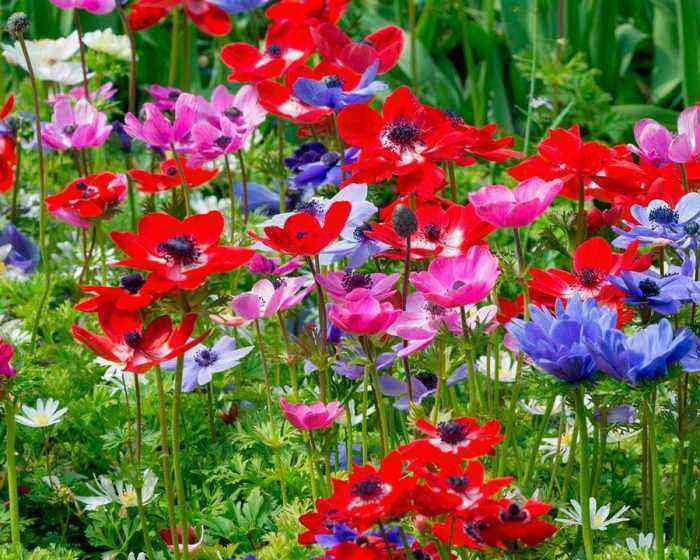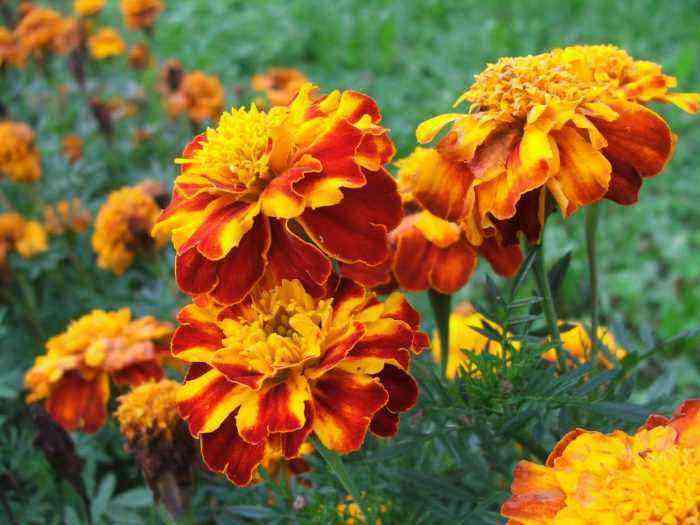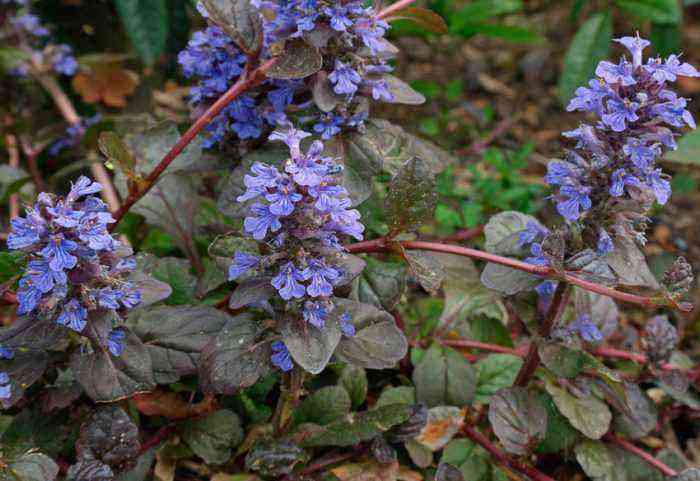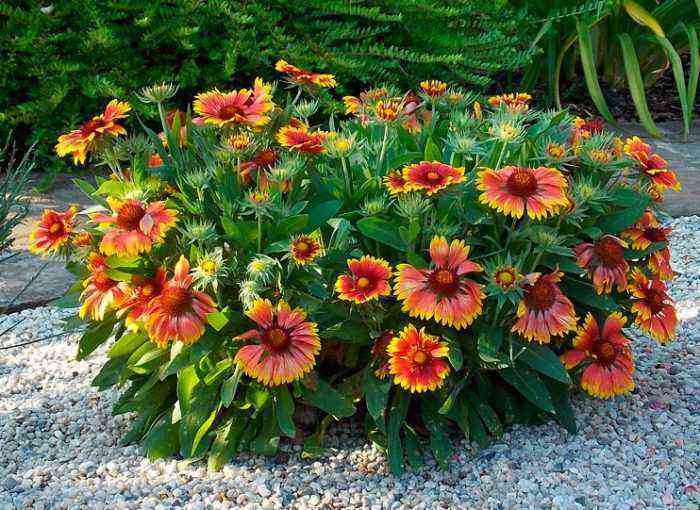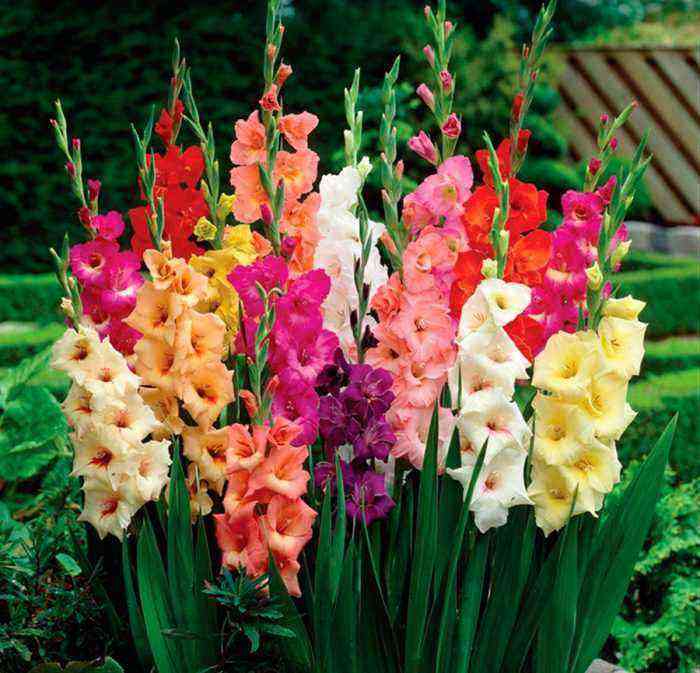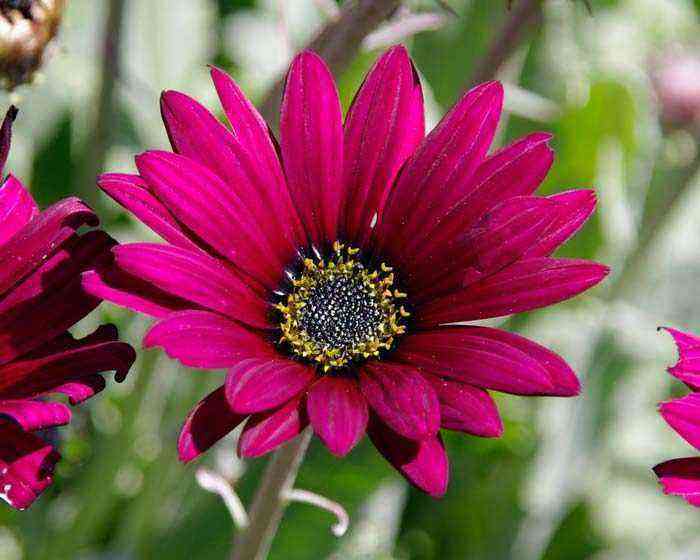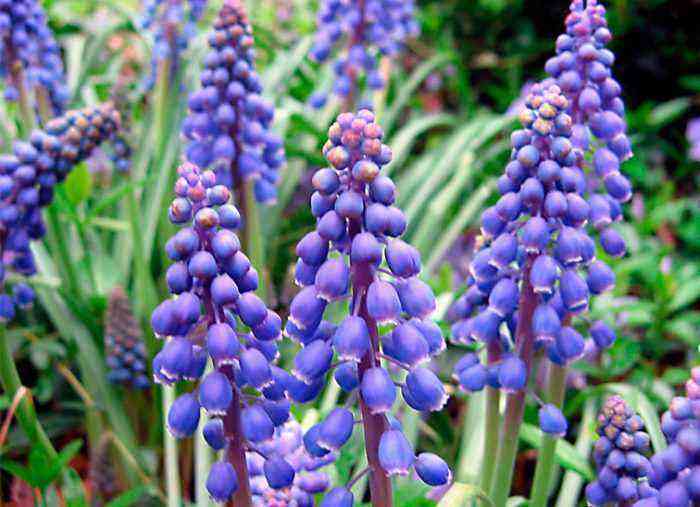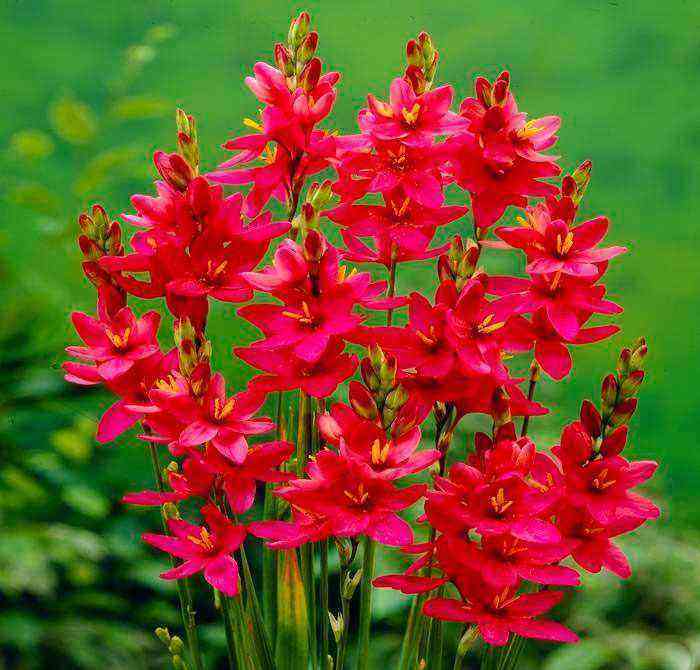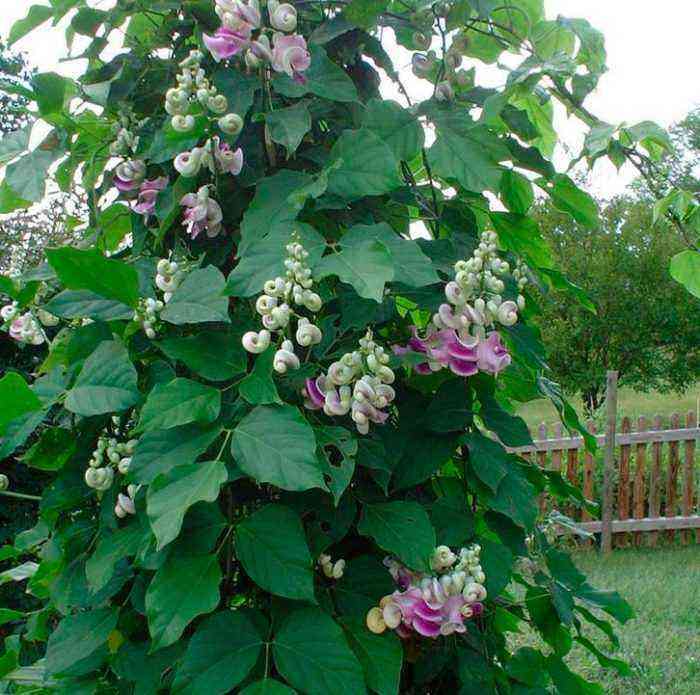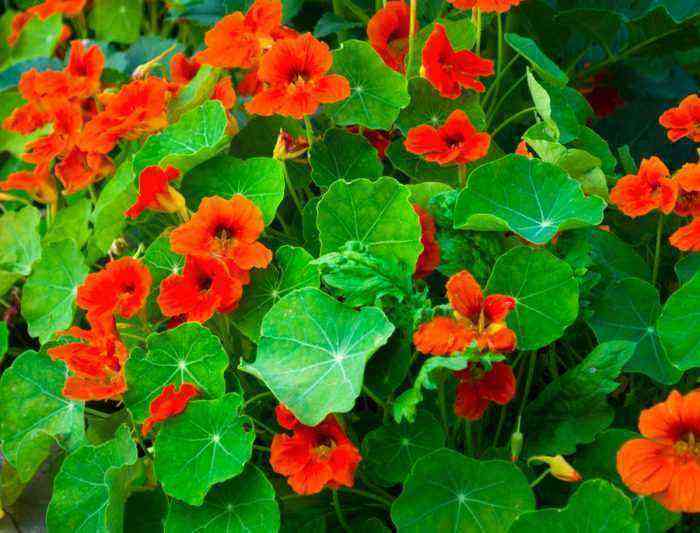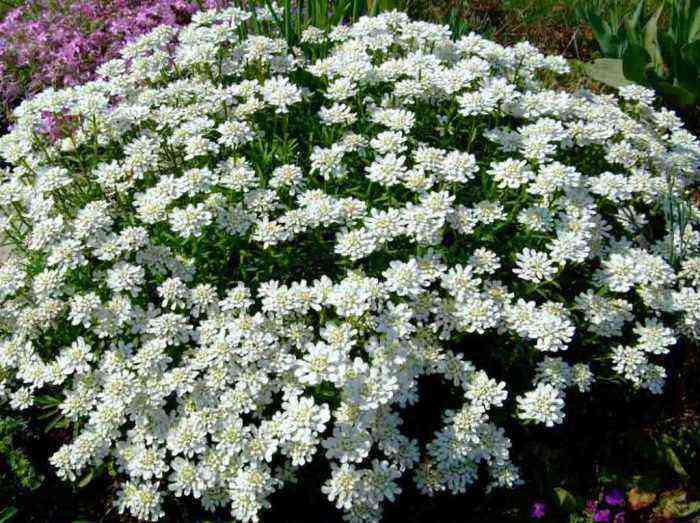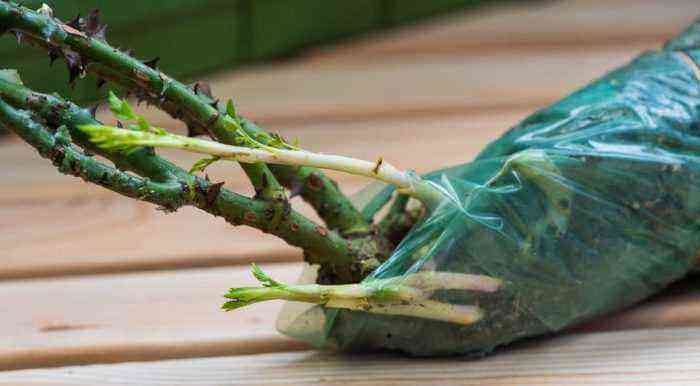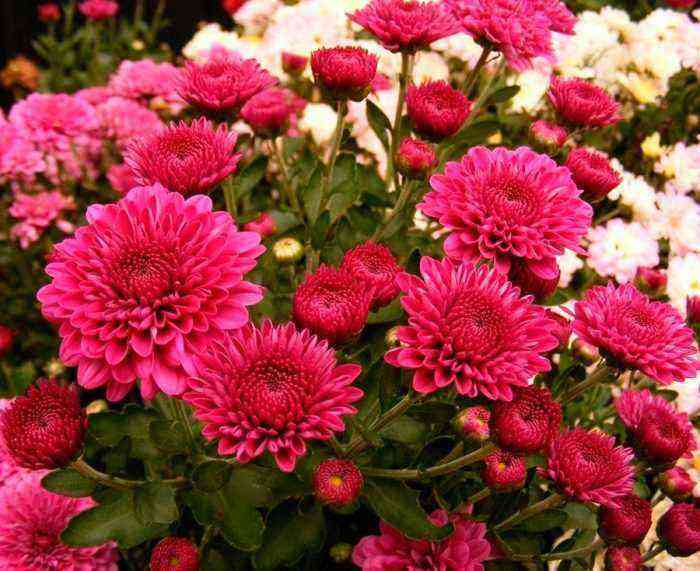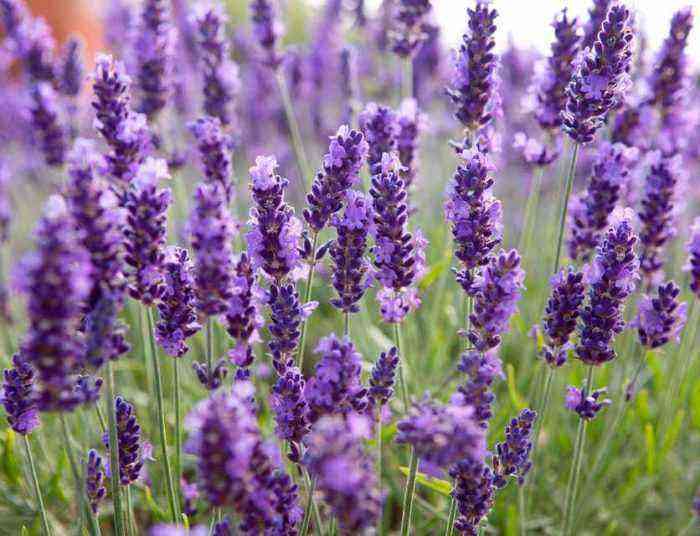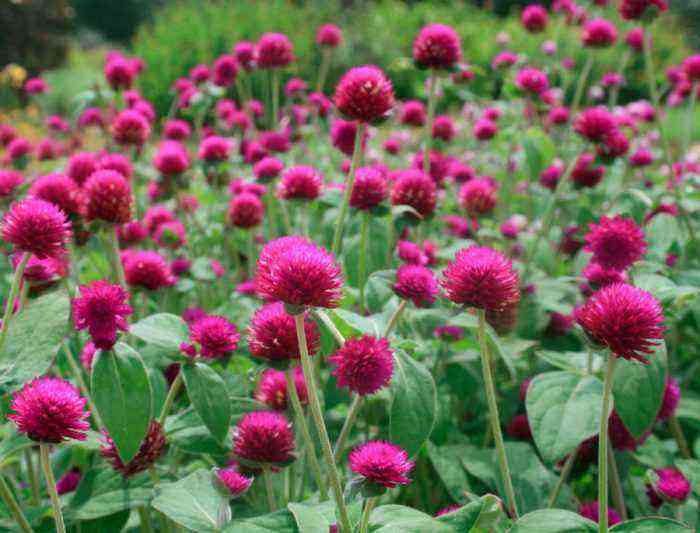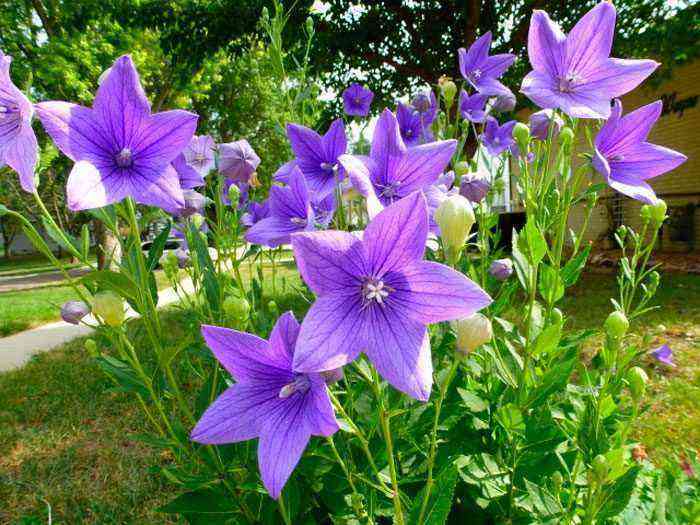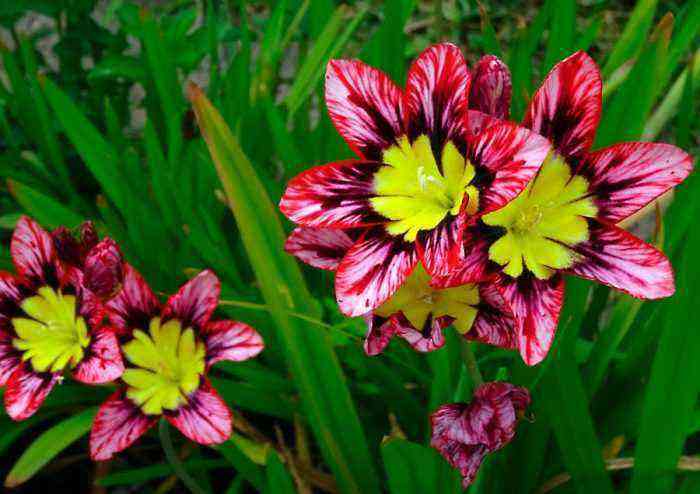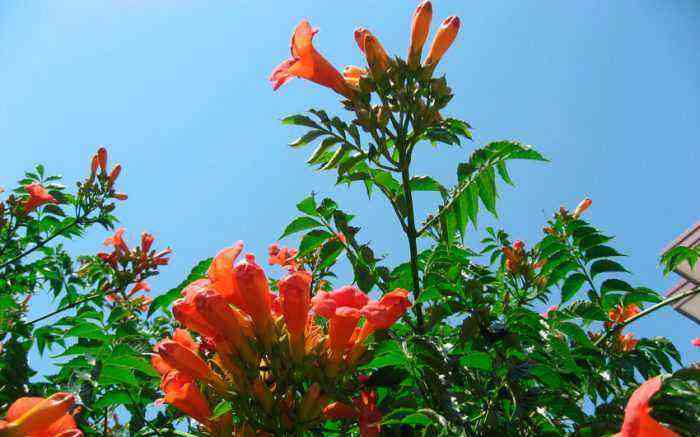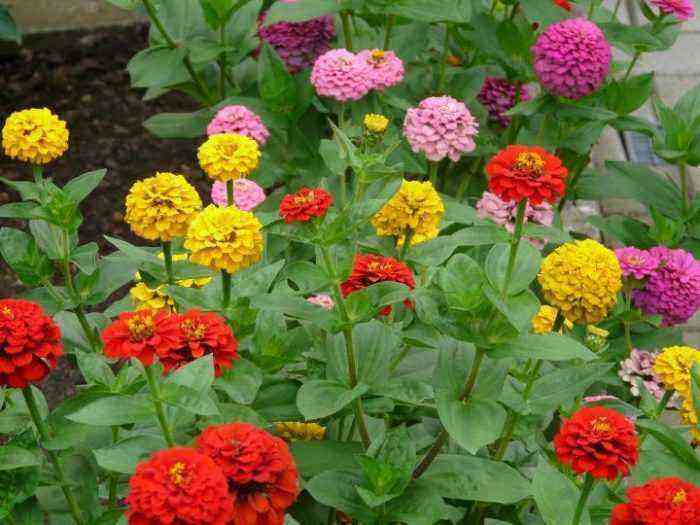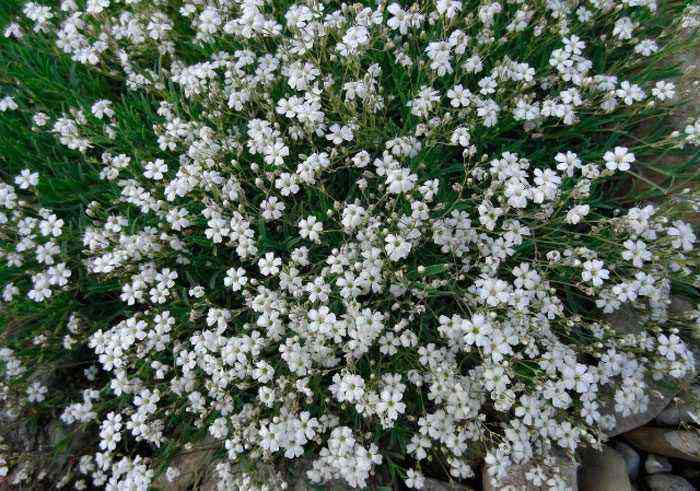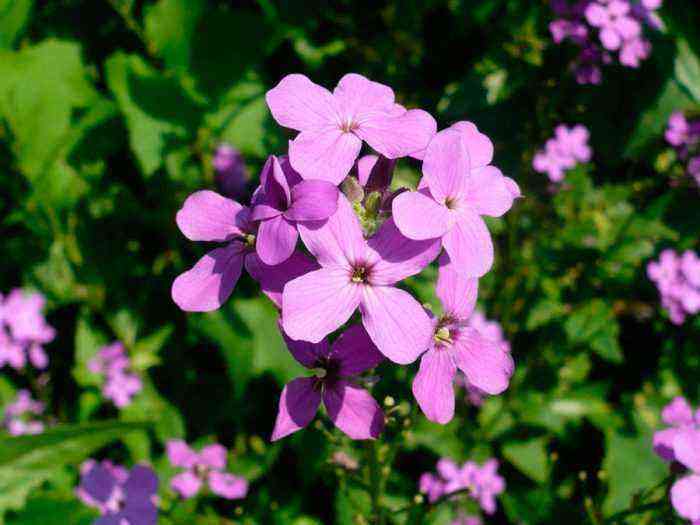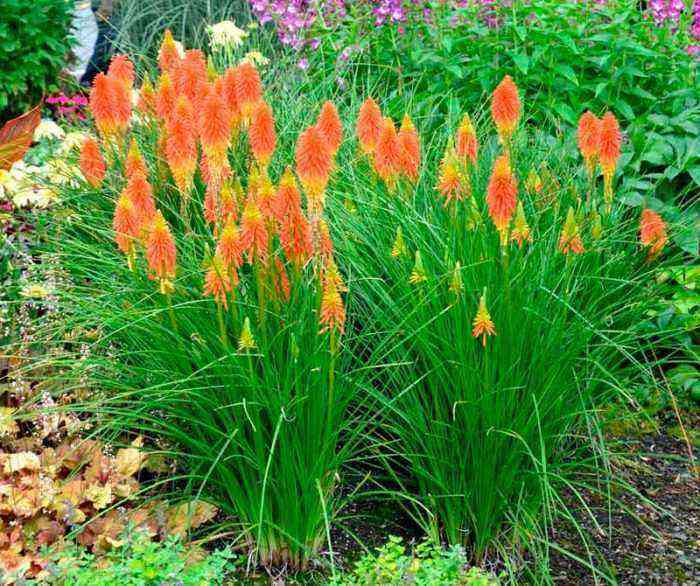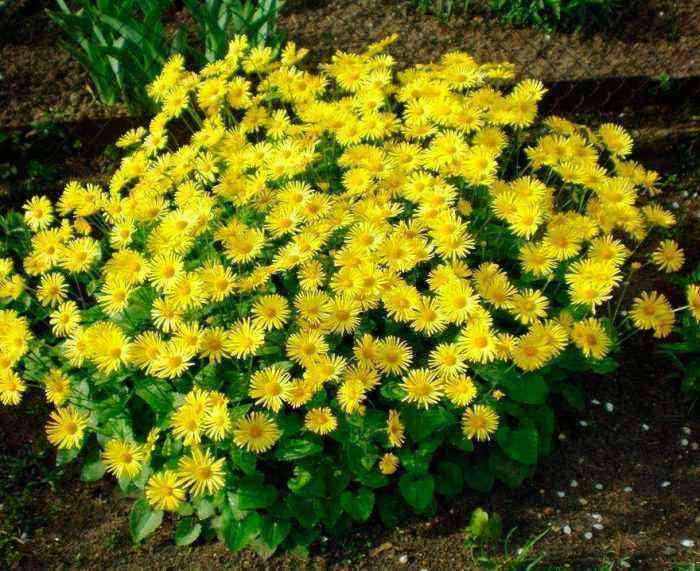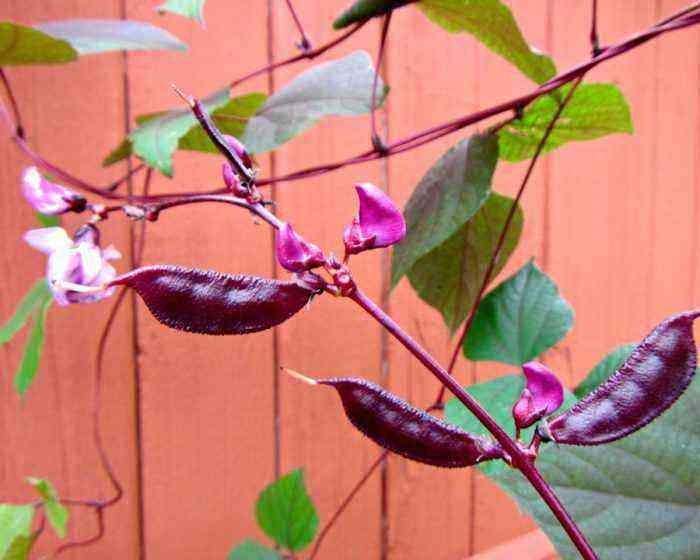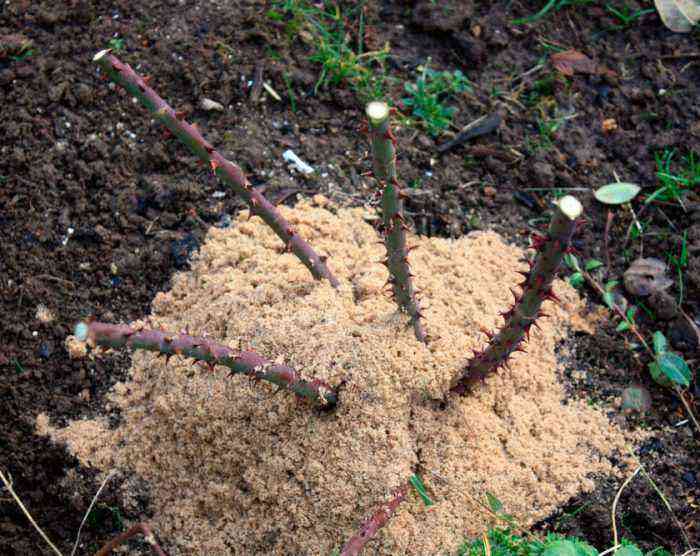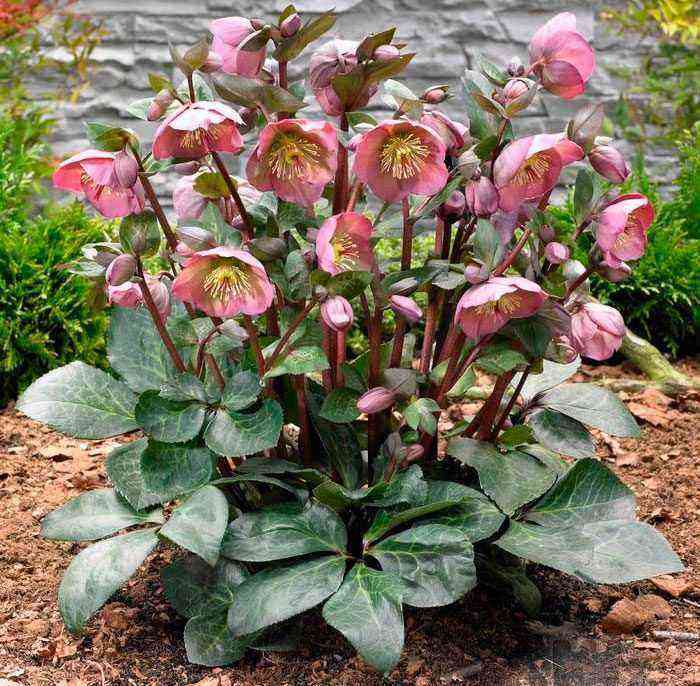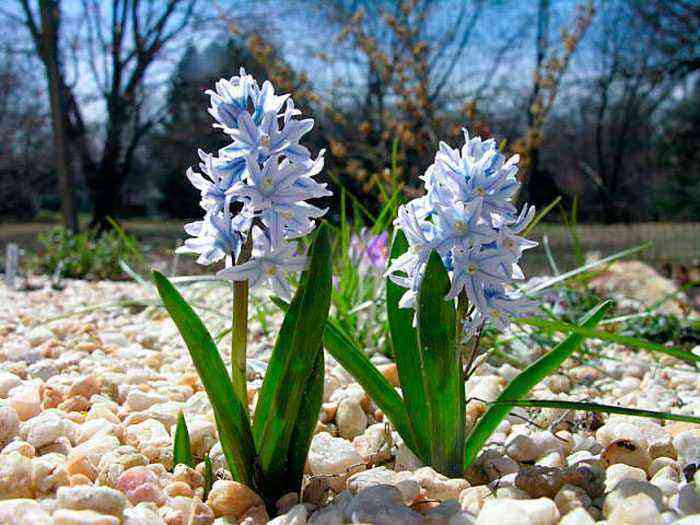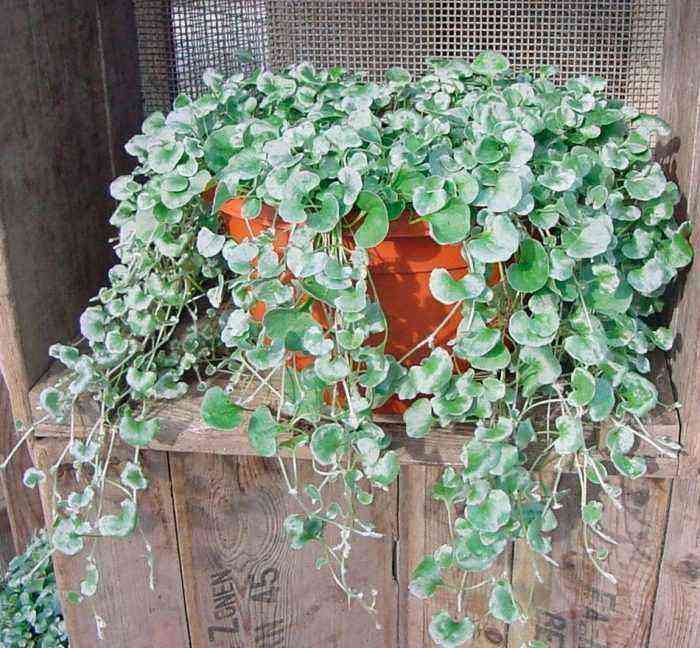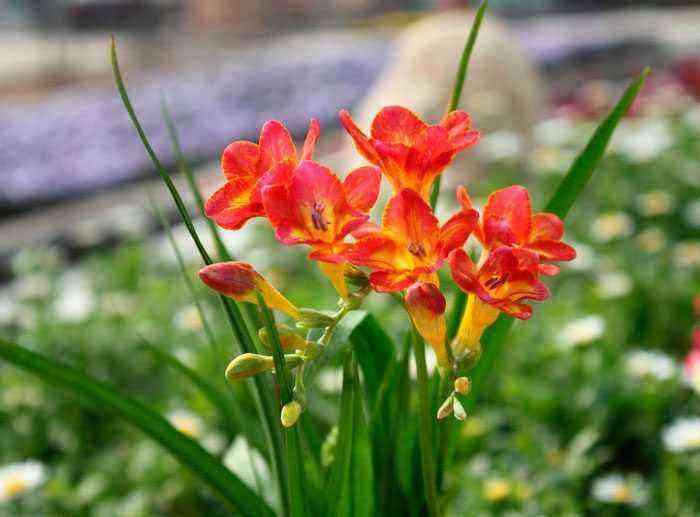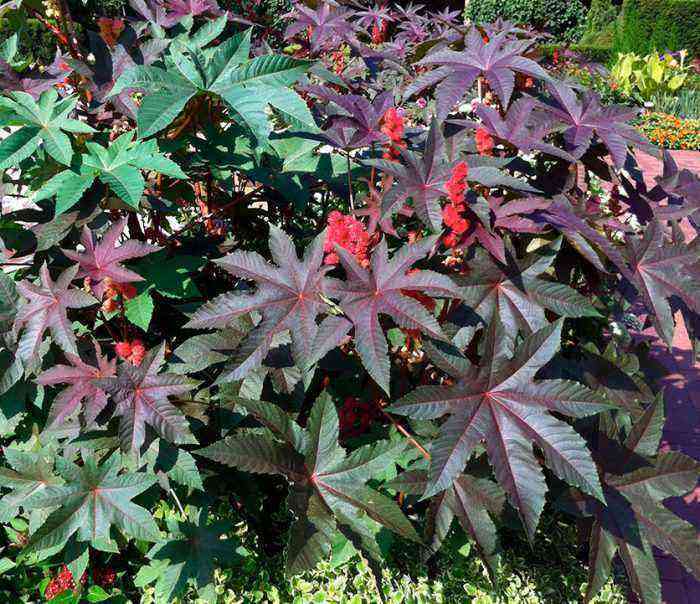An unusual plant kentrantus has an average height and showy inflorescences. It is widely used in landscape design, and is also often used when creating flower beds. Kentrantus is a member of the Valerian subfamily, which is why people often call it “red valerian”. But unlike ordinary valerian, this plant does not belong to medicinal ones. Such a flower comes from the Mediterranean, in this regard, for normal growth, it needs sandy light soil, as well as a large amount of light and heat.
Features of kentrantus
Kentrantus is a perennial plant with a shallow and rather short root system. Its branched shoots are very strong. Outwardly, it looks more like a shrub rather than a herbaceous plant.
The average size of such a flower: the diameter is about 0,6 m, and the height is about 0,9 m. All stems from the base to the very top are covered with foliage of dark green and gray colors. The upper leaf plates are sessile, and the lower ones are attached to the stem with a short petiole.
During flowering, a branched semi-umbellate peduncle is formed at the top of each shoot, which consists of many small flowers. They can be painted in a wide variety of shades of red, which is why such a flower is also called kentrantus red. Moreover, only this type of centrantus is used in gardening.
During one season, such a plant blooms twice. Moreover, its inflorescences have a pungent, but pleasant smell. The first time the bushes bloom in June-July, and the second bloom occurs in August-September. Since the bushes bloom twice, their seeds ripen the same number of times during one season. They spill out freely from the seed pods, which determines the systematic self-seeding of the centranthus.
Planting and care in the open field
Site Selection
Kentrantus prefers sunny places with reliable protection from wind gusts. They are often decorated with curbs, house plots, rock gardens or masonry.
It grows well in nutritious soil with an admixture of lime, which is easily permeable to water and air. Do not forget to make a good drainage layer at the bottom of the planting hole, which will help to avoid rotting of the root system. If the soil on the site is depleted, then the bushes will need regular feeding, which is carried out 1 time in 30 days. During active growth of foliage, nitrogen fertilizers are used, and when the bush blooms, then nitrogen-free. From the second half of the summer period, fertilizers containing potassium and phosphorus begin to be applied to the soil.
Watering
Bushes are watered only during a prolonged dry period, as they react negatively to an abundance of moisture. Stagnant soil can cause specks on foliage. In this case, it is recommended to cut off all affected leaves as soon as possible.
Trimming
Since kentrantus easily propagates by self-sowing, and its bushes grow rapidly, they need mandatory systematic pruning, and do not forget to thin out young shoots. If this is not done, then after only 1 or 2 years the plant will begin to actively capture the territories not intended for it.
Flowering
After the first flowering is over, the peduncles must be removed, while cutting them off to the first pair of leaf plates. Young buds will appear soon. In the second half of the autumn period, the shoots are removed completely.
Wintering
If in your region the winters are not too frosty and snowy, then in the fall, cover the area after cutting the stems with a thick layer of mulch (peat or loose leaves). And in the event that the winters are with little snow and frosty, the installation of a frame shelter will be required. Instead, you can use rags, polyethylene, agrofibre (special non-woven covering material), branches, etc.
Methods of reproduction
Cultivation from seeds
Most often, kentrantus is propagated by seed. Sowing seeds in open ground is carried out either in May or in September. When sowing kentranthus in the fall, the site should be covered with a layer of loose leaf plates.
Sowing seeds for seedlings is carried out in March. They are sown in small pots, while the seeds are not sprinkled on top. In order for the seedlings to be friendly, the crops are harvested in a well-lit place, while the temperature should be room temperature. After the plants reach about 50 mm in length, they need to be thinned out, while only the most powerful seedling should remain in the pot. The grown seedlings are planted in the garden in the second half of May, while the distance between the bushes should be about 0,4–0,45 m.
Cutting
For reproduction of kentrantus, the grafting method is also used. Cuttings are harvested from July to August. For this, powerful branches are cut, which are planted for rooting in a pot filled with nutritious soil. It is necessary to deepen the segments into the soil mixture by about 10 centimeters. When they give roots, they are planted in a permanent place in the garden.
Division of the bush
For this, overgrown bushes are transplanted in July-August. After the plant is removed from the soil, it is divided into several parts. Delenki are planted immediately to a permanent place.
Kentrantus grows relatively quickly and loses its decorative properties. In this regard, experienced gardeners recommend replacing old bushes with new ones on average once every 1 or 3 years. If this is not done, then the flowering of plants will become more and more scarce, and some branches will begin to bare and lignify at the base. But you should not be afraid, since centrantus reproduces quite easily by any of the methods described above.
Types of kentrantus with photos and names
In the course of breeding work, several varieties of kentranthus were created at once. Thanks to this, gardeners have the opportunity to choose those varieties of centranthus that they like the most. Also, if desired, several varieties can be grown in one flower bed at once.
The best varieties:
Ruber (red)
The bush can reach a meter in height, and its average diameter is about 0,6 m. The stems are decorated with lush foliage, and there are also many young shoots. The shape of large inflorescences can be pyramidal or round, they are painted in a scarlet shade. Also among the subspecies you can find plants with pink, white or purple inflorescences.
Narrow-leaved
This variety is slightly less popular than Ruber. These 2 varieties differ in the shape of the leaf plates, while each of them has a sharpening at the top. It is not uncommon for beginners to gardening that these 2 plants are exactly the same and cannot tell them apart.
Long-flowered
The long stems of a vigorous plant are decorated with lush gray foliage, on the surface of which there is a bloom of a whitish hue. The apex of the lanceolate and oval leaf plates is obtuse. Unlike other varieties, this plant has larger flowers. The height of the peduncle is about 20 centimeters, and the size of each flower is about 1,5 centimeters. The inflorescences are colored dark purple.
Valerian
This variety differs from the others in its small size. The height of the bush can vary from 0,1 to 0,3 m. Flowers can be colored ash red or pink. This variety has an early flowering: it begins in April and ends in the last days of June.
Raspberry Jingle
This variety appeared relatively recently, but has already managed to win the love of gardeners. Its large inflorescences consist of large crimson flowers, reaching about 10 mm in diameter. Inflorescences have a pyramidal shape. A branchy bush is covered with dense gray foliage. The maximum plant height can reach about 0,8 m.
